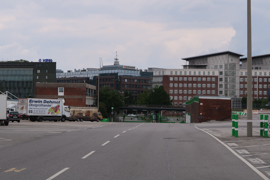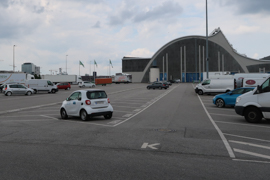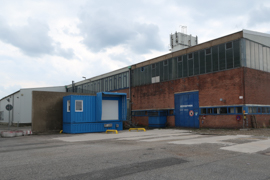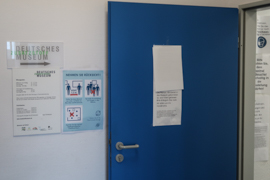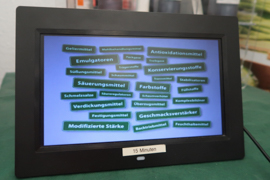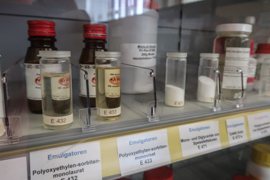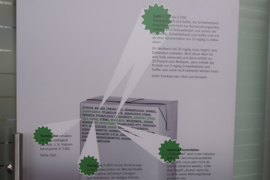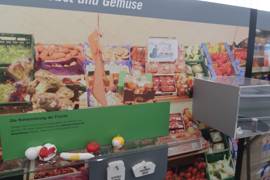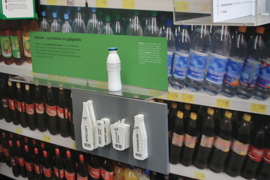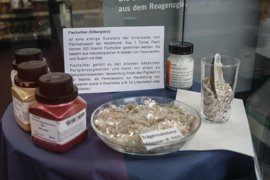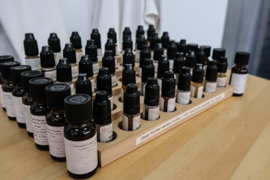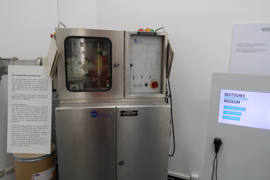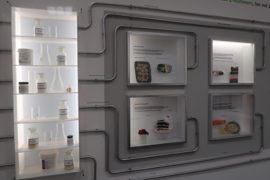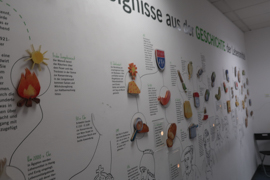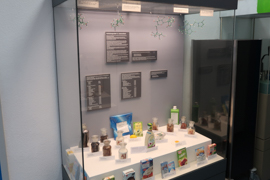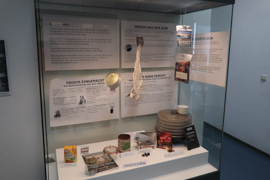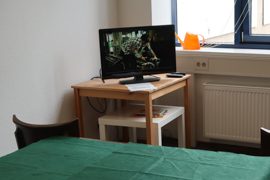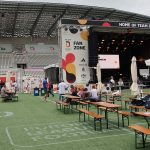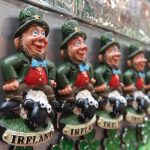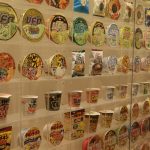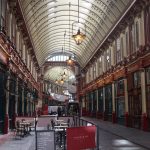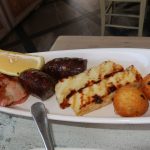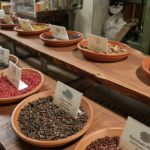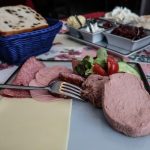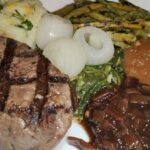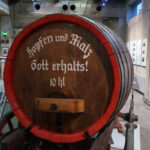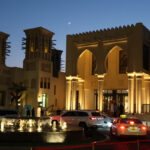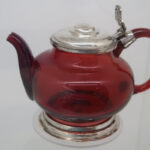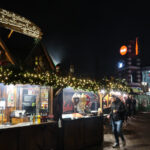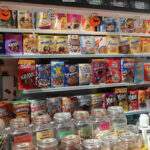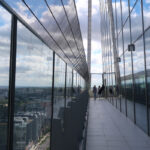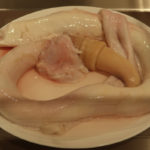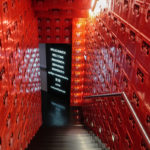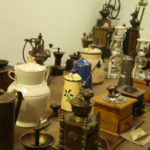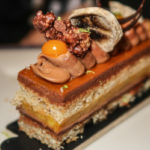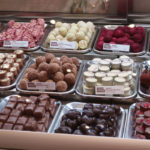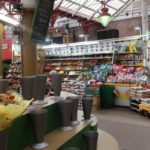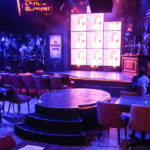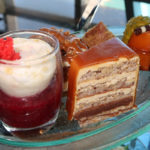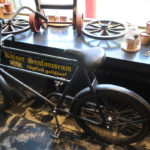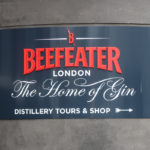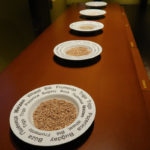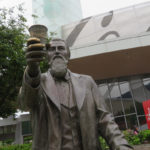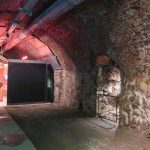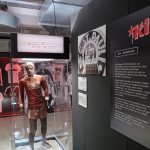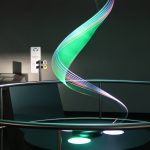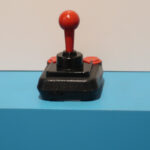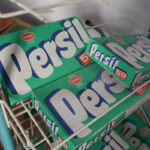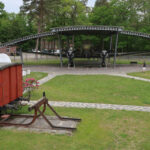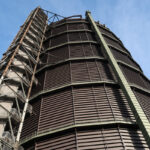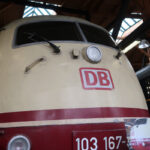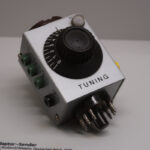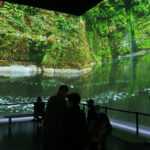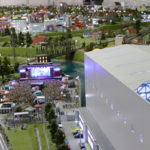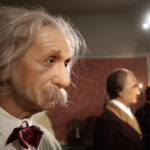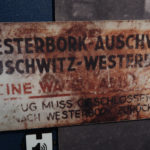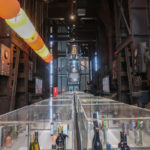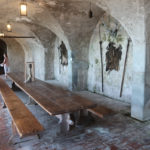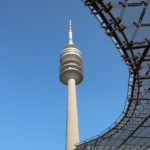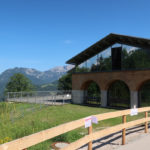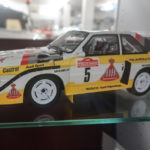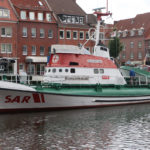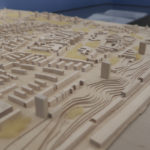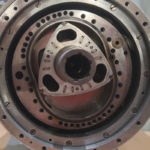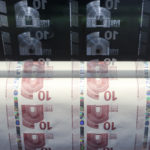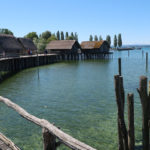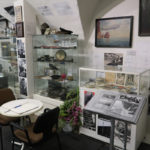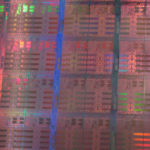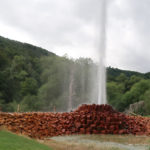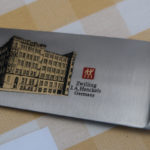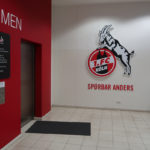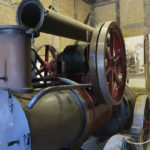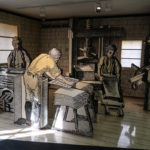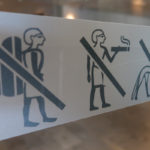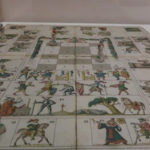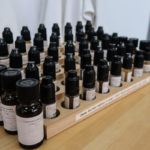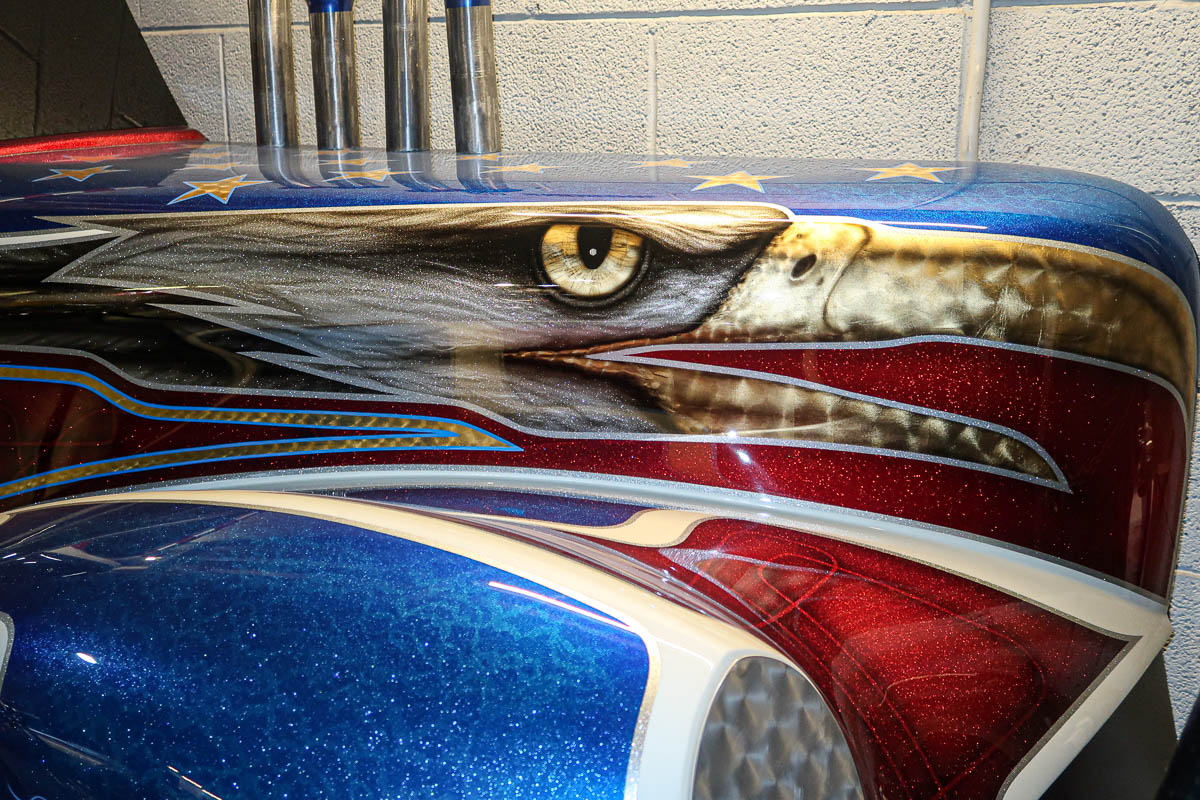German Food Additives Museum
3.50 EUR
Flyctory.com Pros
- Likely a unique place
- Very thoughtful designed museum
- Inspiring and very informative
Flyctory.com Cons
- Comparably small place
- Difficult access
Preservatives, artificial flavors, abherents and more – there are countless potential food additives in our everyday nutrition. You might feel (like me) that you do not have a sufficient level of knowledge about them and how they impact the way they eat. What about going to a museum and learn? Hamburg, Germany, hosts the Deutsches Zusatzstoffmuseum – the German Food Additives Museum. I felt that this must be a quite unique place – and just had to visit it.
Food Additives Museum – Location & Admission
The location of the German Food Additives Museum is right inside the central market. If you walk or use public transport, you can use a gate North of the museum, right next to the Nagelsweg bus stop (lines 3, 34, 640, 641 – there is a Shell gas station next to it). If you come by car or arrive on the weekend (when the central market is not operating), you can use the East vehicle access gate stating you want to visit the museum. There are quite a lot of parking lots, so that this should be convenient. I took a car sharing car to access the museum.
The museum is opening on Wednesdays, Fridays, Saturdays and Sundays from 11:00 to 17:00 hrs. The Thursday times are 14:00 to 20:00 hrs. The museum is closed on Mondays and Tuesdays. Adult admission is 3.60 Euro.





Food Additives Museum – The Visit
The Food Additives Museum is located in an office building. The major part of the museum is located in a comparably long room, but the museum also uses additional space for the exhibition. The large room especially hosts the three key exhibits (in my point of view): The unusual supermarket shelf shows you all the different additives which are allowed in the European market. The Supermarket full of Information shows you fruit and veggies and kept fresh or how you could easily create a perfume which smells like salami. You also learn a lot about the rules how additives have to (or don’t have to) be declared, according to European law.

















My favorite, however, is the cashier of additives: Like in a children’s grocery toy store, you can grab different items (represented by small blocks and a bar code and scan them at the cashier. Instead of a receipt to pay, you receive a list of which food additives you just would have purchased with that shopping cart.



In one of the smaller rooms, there is a very interesting exhibition, how nutrition is changing. The museum illustrates how food is more and more becoming a functional additive and part of our lifestyle. As the whole museum, the exhibition space is rather compact, but it is really well presented. Outside these rooms, in the walkway, there is a nice timeline of how nutrition changed over time. There are also some minor exhibits and a documentation movie you can watch.










Food Additives Museum – My View
A museum about food additives? Can that be attractive? That’s already about what the critics said when this place has been founded in 2008 – and the museum is still active. Thus, this is best proof: yes, it is! The key success factor is of course the creativity of the organizers, who display this topic in a very transparent and interactive way. Even with kids, you can think about a visit to the central market. Unfortunately, the access to the museum is a bit of tricky – but it is worth the effort.
Flyctory.com on Eating & Drinking
Flyctory.com is not a culinary blog. Nevertheless, here are all posts dealing with Eating and Drinking:

In December 2024, my wife and I stayed had two nights at the Conrad Dubai. The Christmas decoration was lovely ...

The Minus 5 Ice Bar in Las Vegas is likely one of those places I would not have visited without ...

On a sunny day in summer, British people, especially from London, storm into Brighton. The coastal town is known for ...

It was a rather quiet and rather early Sunday morning on the tenth day of my Six US States and Nashville ...

At first sight, Corbin in Kentucky looks like a nice, rather small 9,000 people town. However, there are some hidden ...

For my Six US States and Nashville trip in May and June 2025, I decided to skip Dollywood. The Dolly Parton amusement ...

In 1974, the former church St Mark's on North Audley Street in London has been deconsecrated. Nowadays, the centrally located place becomes ...

It is quite exactly one year ago since my wife and I visited San Diego for the second time. The ...

The German Olympic Sports Confederation (Deutscher Olympischer Sportbund) hired a complete stadium for their events during the Paris 2024 Olympic ...

I feel that the more the Strip or Las Vegas Boulevard area is growing as a massive, but also expansive entertainment temple, ...

I rather frequently travel to Dublin for business reasons. However, the Weird Al Yankovic Tour 2023 gave me a rather ...

Since 2007, the Hyde Park Winter Wonderland in London has become a more and more growing Christmas and winter tradition ...

You might not know the company Nissin Foods founded in Osaka and nowadays still based there (and in Tokyo). However, ...

I typically don't review restaurants on Flyctory.com. However, this place is just too special. And it is a highlight for ...

The two world wars have caused significant damage to most German cities - especially those with a somehow-strategical meaning. Thus, ...

One thing I was looking forward a lot during our recent trip to Japan were vending machines. We did not ...

Being in Japan the first time in October 2023, I also explored some of the rather non-European ways to spend ...

The Old Market Hall (Vanha Kauppahalli or - in Swedish - Helsingfors Gamla Saluhall) is one of the most iconic ...

During the last years, I traveled to quite some places in the United Kingdom, which I likely wouldn't normally have ...

Due to its harbor, Hamburg is a very important place for trading goods of all kinds. Not too surprisingly, there ...

There are a bunch of iconic dishes in Iceland. One which made it globally is Skyr. Isey, one of the ...

Yeah, there are plenty of fantastic kinds of food made in Portugal. Think about different fish dishes, sweets - or ...

On the week at which I am publishing this review, many people are focusing on Liverpool. They look forward to ...

Last full day in Iceland. We decided not to start too late (also because the car had to be moved ...

When you pass North Huntingdon Southeast of Pittsburgh on the US-30, it feels like a very typical American city at ...

Damn, it is already four years... And it is more than 2,750 postings since then. On 25th February 2018, I ...

Shall I do a review or a Pictured Story out of this place? I finally opted for the latter option ...

After I made you familiar with Swingers, the "Crazy Golf" provider in the heart of London recently, I just felt ...

Bitburg is a comparably small town in the German Eifel region in West Germany, not too far away from the ...

While I generally enjoy being in the United Arab Emirates due to climate and cultural diversity, I especially have a ...

Leadenhall Market is one of the most beautiful markets in London. The covered market in Central London has been initially ...

The fishing industry has been (and still is) an important part of the Icelandic economy. The Reykjavik Maritime Museum is ...

If you travel to another country, it is - of course - also one of the key cultural experiences to ...

Harry Potter has turned a fictive wizard into a huge franchise. Right next to the place you can spend roughly ...

Once upon a time there was an above-average bakery in Hoboken, New Jersey, right on the opposite site of the ...

I personally love mini golf. For me, it is a great way to relax while trying to identify the right ...

Already the fourth edition of my Food I Had Onboard category. Even though my Covid-19 infection changed quite a lot of ...

Even though the Belgian border is less than an hour drive away from where I live, there are not too ...

The most picturesque tour stop while following the first three concerts of the Weird Al Yankovic Tour 2022 in April ...

I enjoy visiting museums, which deal with other topics than the ones you find practically everywhere - arts, technology, biology, ...

After I recently took you to Bethel Woods, the grounds of the legendary Woodstock Music Festival, in fact taking you ...

The Bergisch Coffee Table (Bergische Kaffeetafel) is a traditional meal, somewhere between a brunch and an afternoon tea. And: it ...

A museum about pigs? Indeed, that's something you can do when you are in Stuttgart. Interestingly, the former slaughterhouse is ...

After he failed with a franchise of confectionary stores, Austrian Josef Zotter decided to go into the chocolate business in ...

Ritter Sport is one of the most famous German chocolate manufacturers. It has been founded in 1912 in Cannstadt, which ...

Greetsiel is one of the popular villages in East Frisia, right at North Sea. Especially the picturesque harbor area is ...

The Covid-19 situation limited my potential to travel between Dubai and Abu Dhabi during the last two years. One place ...

After my second posting about Food I Had Onboard in mid March 2022, I had a couple of interesting flight experiences ...

Regardless if you like Dubai or not, you just cannot argue that the landscape around the United Arab Emirates metropolis ...

There are quite some reasons to visit the Western German city of Aachen. However, before I spend a night there ...

After I got some quite nice feedback about my first Food I Had Onboard posting, I felt to continue this ...

Apart from regional local soccer dominator Borussia and the coal production history, Dortmund is quite well famous for a very ...

The area around the world famous seven star hotel Burj al Arab (if someone is paying me a night there, ...

Inhabitants of East Frisia drink ten times more tea than the average German - with their consumption of the hot ...

ByWard Market in Ottawa is a beautiful entertainment, shopping and relax district in the heart of the Canadian capital. During ...

Watching Dubai from the (currently) world tallest building, the Burj Khalifa, just feels like one of the biggest must-dos for ...

Oberhausen might not be regarded to be one of the most beautiful cities of the German Ruhrgebiet region - but ...

Corn Flake, muesli, granola, any kind of flavored and sugared loops and many more - cereals are one of the ...

As I already told you last year when I reviewed the Charles Dickens Museum in London, I am a huge ...

In October 2021, on a flight from Munich (MUC) to Keflavik Airport (KEF), I decided to go for a new ...

Olivia Star is marketed as Poland's tallest building at the Baltic Sea - and in fact, the 180m high skyscraper ...

The area around Parma is almost a holy place for foodie lovers. Parmigiana cheese, tomatoes, pasta - a lot of ...

Have you ever heard of Surströmming, Hakarl or Spam? Do you mind eating eyes or drinking cow blood? All these ...

Due to their high incidences on the delta variant of Covid-19, the United Kingdom is still / again in the ...

Is that the future of dining? Robots creating your mail and serving them at your table. Which sounds a bit ...

Papenburg has some more interesting places other than the famous Meyer Werft. At the opposite part of the town, my ...

Even though I am not a beer drinker, I made a brewery tour during my last stay in the Salzburg ...

Schloss Burg is just about half an hour away by car from my home town Cologne. The castle on the ...

During my December 2020 trip to Dubai, I stayed in two hotels in the Al Seef district. The area is ...

Even if you likely think of their home brand when you think about Heineken - but in fact their beer ...

One of my favorite franchises when being in the United States is undoubtedly Dave & Busters. It has been part ...

Before the pandemic limitations, One New Change Mall in London has been a really popular place. First of all, it ...

Coffee and tea are key parts of the Arabic culture. Thus, I was curious about visiting the Dubai Coffee Museum ...

Since late October 2020, restaurants in Germany are not allowed to open as a pandemic lock-down measure. However, take-away services ...

A place about and full of chocolate - I am quite sure that I am not the only one who ...

Cologne Cathedral is the key attraction of my home town Cologne, of course (it is even one of Germany's very ...

There is no better start of the day for Munich people than a Weißwurst breakfast with a prezel and a beer. The Weißwurst, ...

Spending the weekend in a hotel dedicated to chocolate? Does not sound too bad, doesn't it? When my wife spotted ...

We did not have too much time in Rotterdam when we visited the region in late August 2020. My wife ...

Sometimes you see hordes of people, locals and tourists, in front of a small booth at the end of Voetboogstraat ...

Hangar 7 at Salzburg Airport, driven by (likely) the world leader of energy drinks, is a quite popular and well ...

One thing I especially loved about Jersey's capital St. Helier are the two markets in the center of the city ...

My birth town Bonn has been hit heavily by Covid-19. The key reason for that are not health issues, but ...

The Californian In-N-Out Burger chain is generally quite well known under West Coast tourists. Aviation nerds especially praise the restaurant ...

Clarke Quay in Singapore is one of the most well-known (and most touristic) entertainment districts in the center of the ...

Not just in regards of the third day of my time in California, but also for the whole trip following ...

Since my recent trips to Singapore and Taiwan latest I know that the true hero of Asian pop culture is ...

The Hofbräuhaus is one of the maybe most well-known and iconic places in Munich, Germany. Even if you don't care about ...

The Etihad Towers in Abu Dhabi may not be as impressive as Burj Khalifa in Dubai, but therefore the queues ...

Combining a cinema visit with Michelin star-chef created food? Nothing is impossible in the United Arab Emirates! At the last ...

Two months of Islamic culture in a free open air festival - this is the Sheikh Zayed Heritage Festival close ...

The Historic Mustard Mill in Cologne ("Historische Senfmühle Köln") is quite a unique place in the million people city. It ...

The Stadtgarten in Cologne is both, a recreational park in the heart of the city, whose facilities are protected, and ...

During each festive season, Cologne is crowded with tourists and visitors due to its Christmas markets. There are masses of ...

There are many iconic places and interesting things to do in Singapore. You may visit historic places as well as ...

The place is so tiny and mousy that there is a huge potential to miss it: if you are exploring ...

It is very hard to avoid stereotypes when a German blogger is writing a posting about bananas. Preparing for our ...

If I would turn Flyctory.com into a food blog, I am sure it would be a terrible fail. Nevertheless, there ...

Beefeater Gin is one of the most well-known and popular gins of the world. Despite the destillation takes places in ...

My wife and I have stayed twice in the amazing Emirates Palace for vacation. To me, it is one of ...

Motorway service plazas are the most boring places in the world? Not if you are in the United Arab Emirates, ...

Just some three years after the complex opened in 2015, the former "I-Drive 360" district next to Orlando International Drive ...

Flyctory.com is neither a food-blog nor an advertisement platform for fast food. However, visiting the McDonald's at International Drive, Orlando, ...

It claims to be the "world largest tourism, leisure, shopping and entertainment project". You can get in touch with a ...

For cocktail lovers, the name Curacao is strongly linked to a liqueur named after that island - as a tourist ...

Maybe one of the most characteristic German products is bread. I even found "German bakeries" during my visit of Taipei ...

On my Weird Al Yankovic Tour trip, I also visited some of the major Atlanta sights. The "World of Coca ...
German Museums
Here are all my postings about museums and exhibitions related to or located in Germany:

The Münchener Residenz ("Munich Residence") is one of the most iconic places in Munich. From 1508 to 1918, it was home of ...

The Harz region will always be a special place to me. I studied mathematics at Clausthal Tech University and thus ...

The German book Der Struwwelpeter ("The Shock-Headed Peter") is one of the most classic and traditional German children's books. It has been ...

Discover 400 million years of the history of Earth - that's what the Zeittunnel ("Time Tunnel") in Wülfrath is promising. On ...

Even though they were struggling this season, Borussia Dortmund is one of the biggest names in German soccer. While I ...

As much as Lordi is the band I featured the most in my album reviews, Miniatur Wunderland is taking some ...

After I already took you on a Visitor Tour through Munich Airport (MUC) in a previous post, here is another ...

The 2025 Rock of Ages shows in Cologne (I visited all of them...) gave me the opportunity to have a closer ...

The Charité is one of the most famous and best hospitals in Germany. It is driven by the two key Berlin universities, ...

I simply love the Miniatur Wunderland. You can hardly challenge that the scale model landscape and rail attraction is the ...

In the second posting about the Autostadt in Wolfsburg, I take you to the VW ZeitHaus Museum (ZeitHaus translates to ...

Germany is famous for its car manufacturers. With Porsche and Mercedes, Stuttgart is likely one of the key cities car ...

As I am traveling to the United States rather frequently and also love to follow Feli from Germany (formerly German Girl in ...

For the second part of my "review battle" of museums dealing with visions around the future, we leave the Museum ...

When I introduced you to the Audi & Siku Museum Höing about three years ago, you already saw that the ...

Wernigerode being located right North of the Harz mountains might not be the most obvious location for an aviation museum ...

I already introduced you to the Museumkaart in the Netherlands, which may be a very profitable (but a bit of ...

There are so many art museums and technical museums out there. However, do we really care sufficiently about the items ...

A very interesting part of visiting Heidelberg Castle is the Deutsches Apothekenmuseum, the German Pharmacy Museum. It is giving an illustrative ...

The website of the FC St. Pauli Museum states that a club like no other deserves a museum as no other. Indeed, ...

Due to its harbor, Hamburg is a very important place for trading goods of all kinds. Not too surprisingly, there ...

The former concentration camp site at Bergen-Belsen might not be as prominent as Dachau, but it is nonetheless one of ...

Visiting Dortmund, my wife and I also headed to the Naturmuseum (Nature Museum) in the city of the German Ruhrgebiet. After the ...

Bitburg is a comparably small town in the German Eifel region in West Germany, not too far away from the ...

Dud you ever feel like learning more about the current operations and future plans of Germany's largest airport? Frankfurt Airport ...

The Pergamonmuseum is one of the key touristic places in Berlin. The museum features over 250,000 objects of German-lead excavations ...

Especially when I visit large places for Flyctory.com, which give me a lot of memories - and pictures - I ...

After staying at the Road Stop Motel in Dortmund, my wife and I were really curious about exploring another outlet ...

It's already quite a while ago since I visited the Deutsches Jagd- und Fischereimuseum, the German Hunting and Fishing Museum, in ...

Lüdenscheid in the Sauerland region of Germany, Southeast of Dortmund, might not be on the top of the list when ...

BMW - the Bayerischen Motoren Werke are definitely one of the most famous companies of Munich and a synonym for German ...

The museum at the Schwelmer Straße 41 is not exactly at birthplace of Wilhelm Conrad Roentgen - but it is just a ...

The harbor area is the heart of the German city of Hamburg. The history of the city is closely linked ...

The area around Trier is holding a bunch of records for the oldest buildings and structures in Germany. The rationale ...

I enjoy visiting museums, which deal with other topics than the ones you find practically everywhere - arts, technology, biology, ...

At the beginning of July, my wife and I visited the LWL Freichlichtmuseum Hagen, the LWL Open Air Museum in Hagen. The ...

During the Nazi regency in Germany, the Emslandlager (Emsland Camps) was a group of concentration and detention camps in the Emsland region, ...

A museum about pigs? Indeed, that's something you can do when you are in Stuttgart. Interestingly, the former slaughterhouse is ...

A museum full of computer games and gaming history? The German capital can offer that one! Right in the city ...

Siegsdorf between Rosenheim and Salzburg in Bavaria might be a rather typical spot for that region: a rather nice city, ...

The Deutsches Museum (literally: "German Museum") is an amazing technical and scientific museum in the heart of Munich. While I just did ...

Ritter Sport is one of the most famous German chocolate manufacturers. It has been founded in 1912 in Cannstadt, which ...

During a trip to the German North Sea shore in later 2021, we also visited the Automobil- & Spielzeugmuseum Nordsee. The ...

Campers, motor homes or recreational vehicles - no matter how you call do have your hotel room with you during ...

I feel that one advantage of Flyctory.com compared to significantly larger travel platforms is that I can also take you ...

After the end of World War II, the blocking of access to West Berlin by the Soviet Union (the so-called Berlin ...

I already introduced you to the Visiodrom in Wuppertal, for which a former gasometer has turned into an audiovisual exhibition ...

Germany between World War II. - this is roughly the mission of the House of the History of the Federal ...

Apart from regional local soccer dominator Borussia and the coal production history, Dortmund is quite well famous for a very ...

One of the architectural witnesses of the industrial heritage of the Rhein-Ruhr Region in Germany are definitely the gasometers. These ...

The region of Stuttgart is one of the key car manufacturing areas of Germany. Thus, it has been not too ...

The Lokwelt Freilassing is one of the most famous train museums in Germany. During a trip through Bavaria, I had ...

Inhabitants of East Frisia drink ten times more tea than the average German - with their consumption of the hot ...

Hauptstadt der Spione - "Capital of the Spies". This is a book, which you can buy at the souvenir store of ...

The Tränenpalast ("Palace of Tears") in Berlin is the former border crossing point between East and West Berlin. It is located at ...

The Sustainability district, which is marked in green on the Expo 2020 map, featured some really interesting pavilions during our ...

The Aquarium is one of the attractions of Wilhelmshaven. During a visit in summer 2021 under Covid-19 conditions, I visited ...

From outside, the Auto & Traktor Museum Bodensee ("Car and Tractor Museum") at Lake Constance looks like a traditional old farm ...

Madame Tussauds is a global franchise - not too surprisingly, they also have an outlet in the German capital, Berlin ...

If you think about oil producing countries, you may think about the USA or the United Arab Emirates. In fact, ...

Driving a model landscape or a large model train landscape in Germany is a difficult business: Even if you do ...

There was a duplicate reason to visit the European Hansa Museum in Lübeck in late July 2021: apart from the ...

Not only because auf an early 1990's video game, I am deeply interested in the Hansa and its history. Thus, ...

It is almost needless to say that Adolf Hitler was obsessed with megalomanic ideas. Apart from ruling the world and ...

Have you ever heard of Surströmming, Hakarl or Spam? Do you mind eating eyes or drinking cow blood? All these ...

Northern Germany, especially the East Frisia (Ostfriesland) region in model scale? This is exactly what the Leeraner Miniaturland (liternally: Leer Model Land) ...

If you know the name Carlo Pedersoli by heart, then you are likely ready to head to Berlin since 27th ...

A Panoptikum is a place for everything you can see, if you translate it roughly. The Hamburg Panoptikum in St ...

Historic panoramic painting fascinated me massively the last months. I already introduced you to the Panorama Mesdag in The Hague ...

Papenburg has some more interesting places other than the famous Meyer Werft. At the opposite part of the town, my ...

Professional stargazing: The European Southern Observatory, short ESO is a collaboration of multiple European countries to gather astronomic forces on the ...

Even though the Netherlands capitulated against Germany just after a few days under attack during World War II, they have ...

There are so many interesting places in Hamburg, which are still on my bucket list. Of course, the Northern German ...

The Red Dot Design Award is one of the most well-known (and prestigious) design awards in the world. However, the ...

Nuremberg (or Nürnberg, how it is named in German) has some sort of tough political-historic heritage. Several sites still remember ...

The German Movie Museum - or: Deutsches Filmmuseum is located in the heart of Frankfurt (Main). It gives you an overview about ...

The Cap San Diego is a general cargo vessel, which has been in duty between 1962 and 1986. Since then, it ...

The Burg Meersburg (Meersburg Castle) in the city of Meersburg is one of the iconic landmarks in the Lake Constance / ...

Zeppelinheim - the nominal reference in the name of the borough South of Frankfurt to the legendary German airships is ...

Two Olympic Gold Medals and multiple other medals and World Cup victories (with a special focus on Super-G) - undoubtedly, ...

Undoubtedly, Munich Olympic Tower is one of the iconic buildings of the Bavarian city. Even though the tower is located ...

Gronau in the Münsterland region in Western Germany calls itself the "Music City". The some 50,000 inhabitant town is definitely not the ...

The Weiße Rose / "White Rose" was a resistance group during the German Nazi regime. Mainly consisting of university students, she ...

The Berchtesgadener Land is not only nowadays well-known as a popular tourist destination, there is also a dark part of ...

A museum with 90 vintage cars and so-called Yountimers might not feel to thrilling. If you add that about half of ...

Even though I could likely never have a maritime life (I would feel too locked away on a ship), I ...

A place about and full of chocolate - I am quite sure that I am not the only one who ...

The marketing flyer of the Museum Prototyp in Hamburg is really self-confident. The name of the car history museum is not ...

The Meyer Werft in Papenburg is one of the most iconic plants of German engineering, indeed. The site is manufacturing ...

Even though architecture is a topic which so much influences our everyday life, the German Architecture Museum (Deutsches Architekturmuseum - ...

The Munich Toy Museum is one of these typical hidden gems you find in many cities. Right in the city ...

The Deutsches Museum (German Museum for Science and Technology) in Munich is one of the most fascinating places in Germany ...

Cologne Cathedral is the key attraction of my home town Cologne, of course (it is even one of Germany's very ...

Though there is the amazing tiny Zeppelin Museum in Meersburg, not too far away, people tend to think about the ...

During an October 2020 trip to the East Frisia (Ostfriesland) region, I just could not prevent myself to have a ...

Frankfurt is the banking capital in Germany and one of the key financial centers of all Europe.Thus, it may not ...

Nuremberg is deeply linked to the German Nazi regime between 1933 and 1945. The key reason for that are of ...

Especially in the recent past, I read a couple of ridiculous comparisons between certain people and political groups (which I ...

What is Germany's most popular tourist attractions? According to many popular rankings including TripAdvisor, it is neither the Brandenburg Gate ...

Aviation fans likely first think about the zeppelins when it comes to Friedrichshafen, Germany. However, the city is also home ...

The Pfahlbauten (Lake Dwelling) at Unteruhldingen, prehistoric houses built on wooden piles, are one of the Top 5 attractions of the ...

Air ship and zeppelin flights / flight history is a quite popular part of a visit at Lake Constance. In ...

A Calculation Museum? Sounds like a place for die-hard nerds - but the Arithmeum in Bonn is really a popular ...

The Historic Mustard Mill in Cologne ("Historische Senfmühle Köln") is quite a unique place in the million people city. It ...

You may know Mönchengladbach (or: Moenchengladbach) for soccer, likely. However, the city hosts one of the most remarkable Star Wars ...

The Vulkaneifel region Southwest of Bonn, Germany, is still a quite active vulcanic region. Thus, all around there and in ...

The next cities around are Trier, Sankt Wendel or Idar-Oberstein - the small city of Hermeskeil could be seen as ...

Solingen, some 30 km Northeast of Cologne, is known as Germany's headquarter of the knife and scissor industry. Thus, it ...

I already visited a couple of stadium tours with Flyctory.com in the past. My home and heart soccer club, 1 ...

Wuppertal in the Bergisches Land region Northeast of Cologne hosts a very special attraction for train and rail enthusiasts: the ...

Bad times of terror, being pried and controlled in a country without the freedom to move - or good times ...

Did you ever copy a CD from a friend? Plagiarism can be much worse than just bootlegging. The Museum Plagiarius ...

Lindlar, a minor Eastern suburb of Cologne, hosts one of two open-air museums driven by the regional Rhineland authority LVR ...

Bergisch Gladbach, a 110,000 inhabitant city East of Cologne, is a traditional location for the production of paper. While nowadays, ...

After I visited the Sinsheim sister museum in February, I have been very curious about visiting the Speyer Technology Museum ...

One of the key attractions in Ratingen, Northeast of Dusseldorf, is the remarkable Cromford Textile Factory, which is driven by ...

When people think of real "Eau de Cologne", they typically think about the well-branded 4711 brand located in the city's ...

Due to the limited exhibition space of the "Deutsches Museum" (German Museum of Technology), the famous Munich educative center had ...

As I for example stated in my review on Louvre Abu Dhabi, I am quite much interested in ancient cultures ...

The Cologne City Museum's recent history is not really what one would call "lucky". After a water damage in later ...

Maybe one of the most characteristic German products is bread. I even found "German bakeries" during my visit of Taipei ...

Located quite prominently right at the motorway A6 at Sinsheim (home of the TSG Hoffenheim soccer club), the Technik Museum ...
